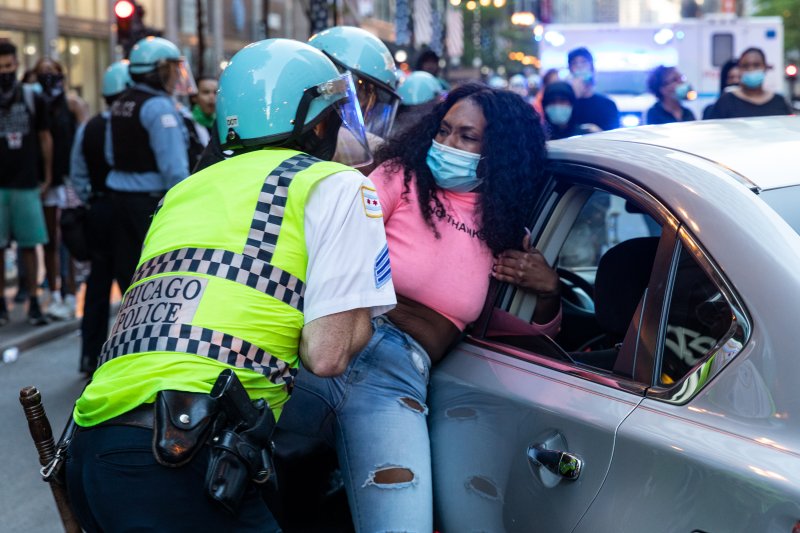Inside Bail Funds' 'Nonstop' Efforts to Free the Thousands of Protesters Being Detained Across the U.S.

ust a few weeks ago, the Minnesota Freedom Fund was struggling. “We were down before all this started,” Steve Boland, a board member, tells TIME. “We did not have the financial resources at that point to pay bails and get people out.”
Now, the money is flowing in at a staggering pace. Following the police killing of George Floyd in Minneapolis, protests spread across the U.S. and the Minnesota Freedom Fund went viral. In just the last week they’ve received some 800,000 individual donations amounting to about $31 million, with the deluge prompting them to ask people to send money elsewhere. “It took Paypal 45 minutes to prepare a download today, because it doesn’t usually have to do this many records,” Boland says.
A bail fund is typically a local collective driven by volunteers who work to raise funds to free people incarcerated on bail, as well as to advocate for systemic bail reform. Across the country, these funds are now receiving a huge number of contributions from donors. The Chicago Community Bond Fund and the Peoples City Council Freedom Fund in Los Angeles have both taken in more than $1.5 million. Free Them All For Public Health, in New York, has raised over $700,000 — and has also asked people to stop sending them money.
The donations are a huge boost for nonprofits who were often previously operating on thin margins. But this financial influx is not the end-all solution to get people out of jail — rather, it’s the beginning of the process. Activists can’t simply walk up to a precinct with a check and leave with freed protesters, especially in an era of COVID-19 complications, curfews, and with police resources spread thin. In this climate, some protesters have been held up to 72 hours before their boosters even get a chance to put up bail money. “There’s a lot of protesters who are basically disappearing into these jails,” Tyler Crawford, the director of mass defense at the National Lawyers Guild (NLG), tells TIME.
Over the past week, a cross-country web of bail fund organizations, lawyers and individual activists have taken on the tedious, painstaking work of tracking the thousands of protesters caught up in the carceral system. “When people hear about [posting] bail or being on the ground, they might think it’s all ‘lights, camera, action,’” Chaedria LaBouvier, a curator who has been working to release protesters over the last week, explains. “But it’s super unglamorous. It’s getting lawyers to try to follow people in the system. It’s working with people who have back-channel connections. It’s waiting for updates and staying by the phone for hours.”
‘Utter Chaos’
When someone is arrested, they are taken into police custody and, after a period of time which can vary greatly, are told whether or not they have been charged with a crime. Depending on the severity of their charge (and a judgment of whether they constitute a flight risk), they may be required to pay bail in order to be released or else remain in jail until their trial. Bail can be set in the thousands, hundreds of thousands or even millions of dollars.
Follow us on twitter (ajuede.com) or on Instagram (ajuedeman) for details of the global situation presently.





.jpeg)
Comments
Post a Comment